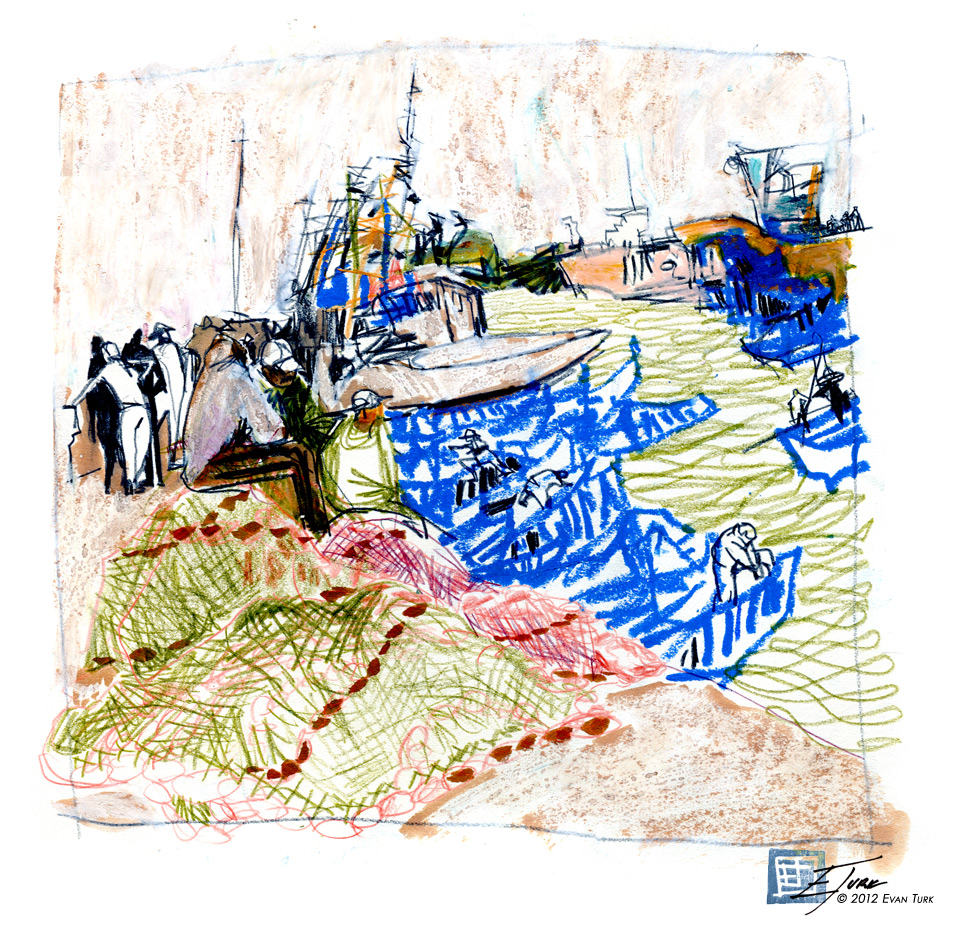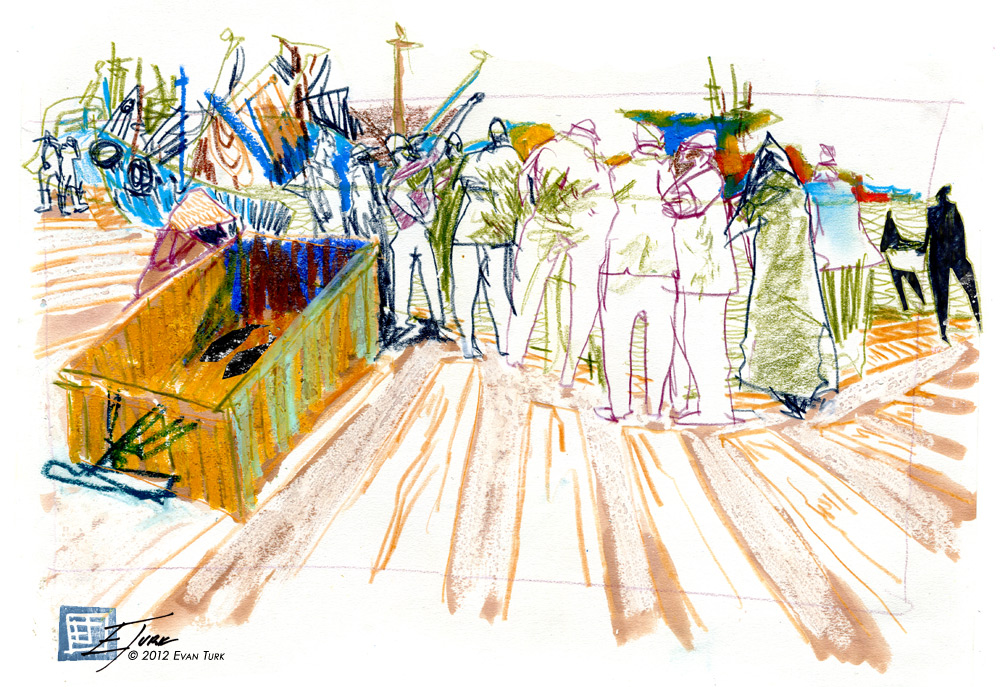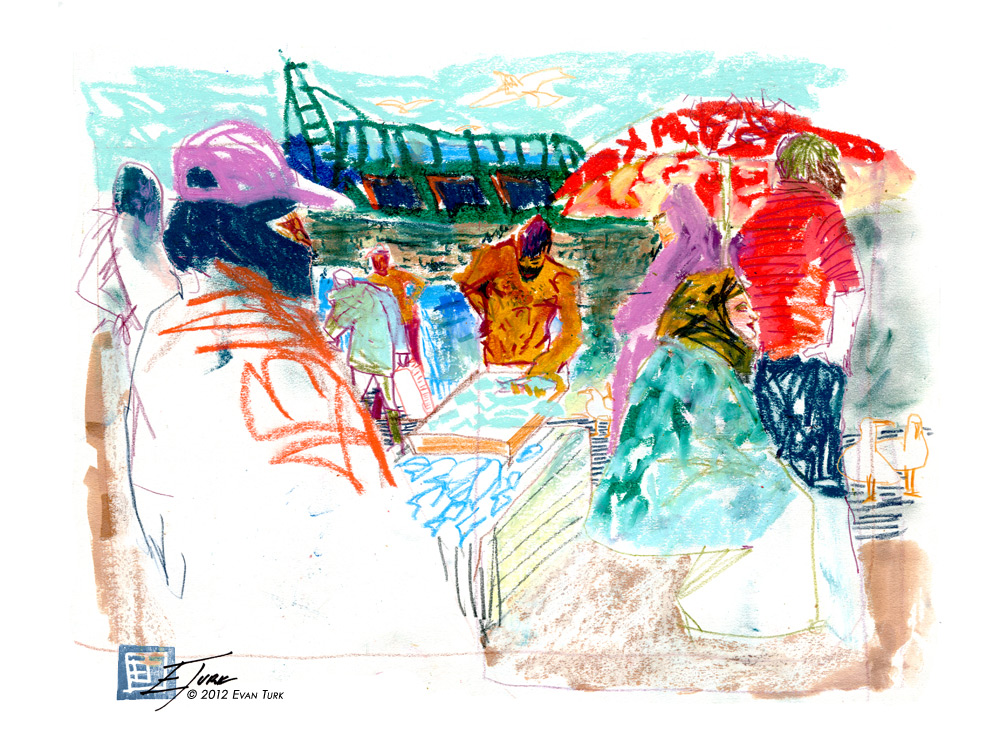Usually I have not encountered the same resistance from people towards drawing as I have seen towards photography. With drawing, you are in a more vulnerable position since you have to wait and finish, so it feels less predatory and more reciprocal to me than photography. But in Essaouira, the people in general felt very hostile towards it, and one man was furious and ripped up the drawing I had done of him.
The only place this was not true, was in the fishing docks where everyone was very friendly, and interested in what I was doing. As an international port, the center of the city is the fishing dock where fishermen go out in bright blue fishing boats all through the day and bring back their fresh catches to sell on the docks and into the medina.
 |
| Early in the morning, the men prepare their boats and repair their nets to go out to sea. |
 |
| Men wait as the fishermen bring in the latest catch. |
 |
| Men and women along the docks wait to sell fish, rays, sharks, eels, lobsters, crabs, and any other type of sea creature you can think of. |
 |
Also at the fishing docks is the shipyard where a dozen ships are put up on dry-dock for repairs.
After drawing so long at Mystic Seaport in Connecticut, it was wonderful to be able to see a completely different type of shipyard. Here the men were repairing a sardine boat, with ribs exposed.









